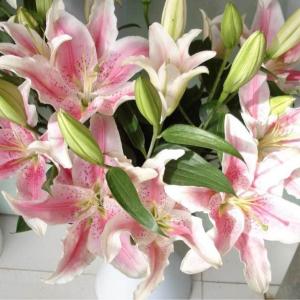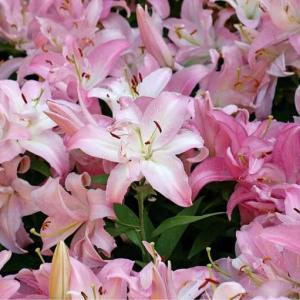文章
Abigal
2017年05月02日

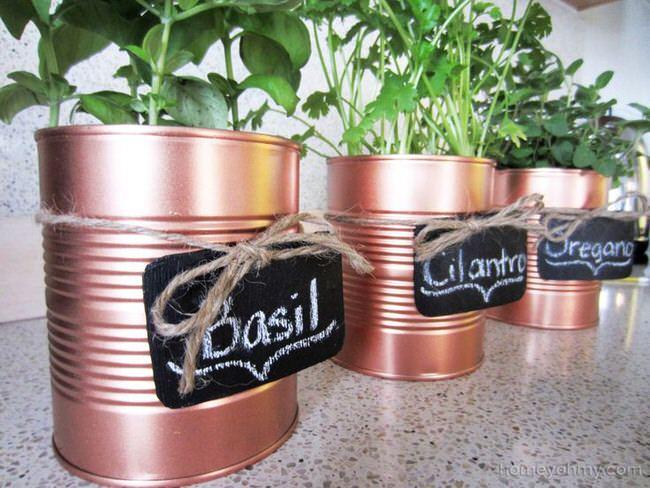
I love metal projects, and copper is a perfect medium to reflect the natural and changing state of a garden. Beautiful in all it’s forms, it is representative of how plants and gardens change through their seasons, and offer different interest at different stages. Also, it’s just really fun to work with! Relatively inexpensive, copper starts it’s life shiny and bright, and patinas over time to a lovely verdigris. Although I love that look, if you want your copper project to stay bright, simply seal it with an exterior grade clear sealer. So on to these great DIY copper garden projects that any of you can do in an afternoon! Our featured project, above, is a tutorial on how to make DIY copper tin can planters (and chalkboard tags!) from Homey Oh My! Easy and quick project with impact!
‘Tool Using Animal’ (via Instructables) made this incredible copper rain chain with copper tubing and solder. This is my fav rain chain project, and the tutorial is very complete, but I do notice he used a blow torch to solder the rings. I personally don’t own a blow torch, but it honestly gives the cleanest look, so if you have to borrow one, do! If you can’t or aren’t comfortable using one, look forward to the next project…

As promised, a copper rain chain made without a blow torch! Ex-Scapes made this DIY copper rain chain using copper wire instead of solder…
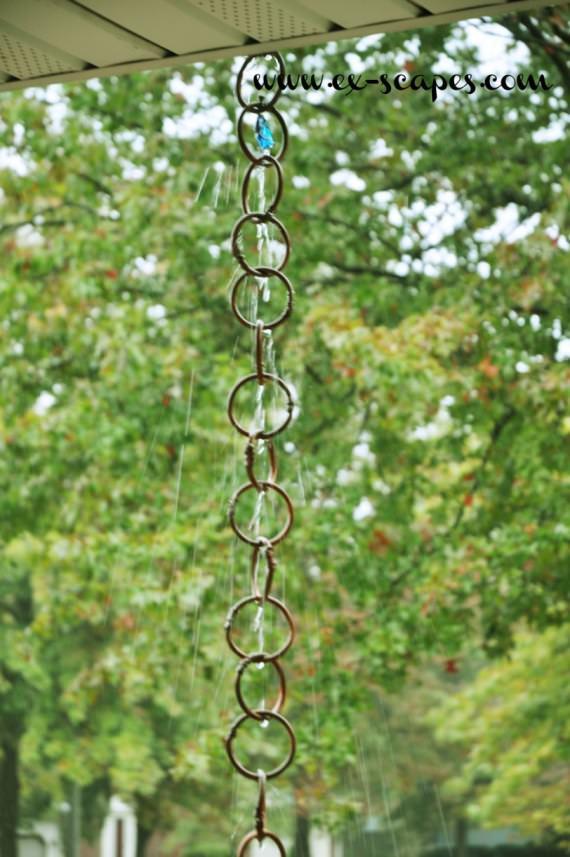
Simple, simple, simple! This copper mailbox by Sand and Sisal is a half hour project…really! What great curb appeal!
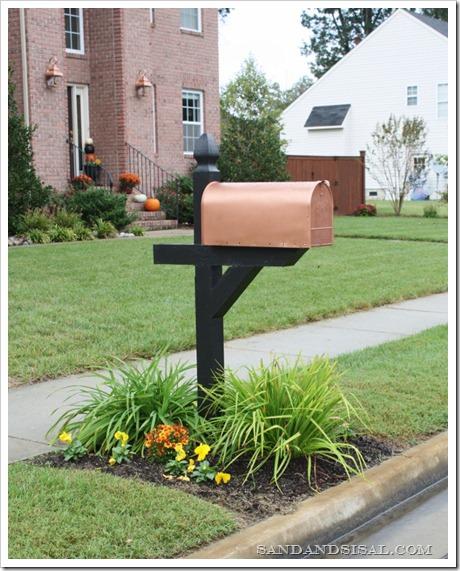
Ashley of Sugar and Cloth, and contributor at Poppytalk, created these DIY mini copper planters from copper fitting caps and a bottle of ketchup! Or catsup…whatever… Curious? Easy and cool! How about these with a moss garden?
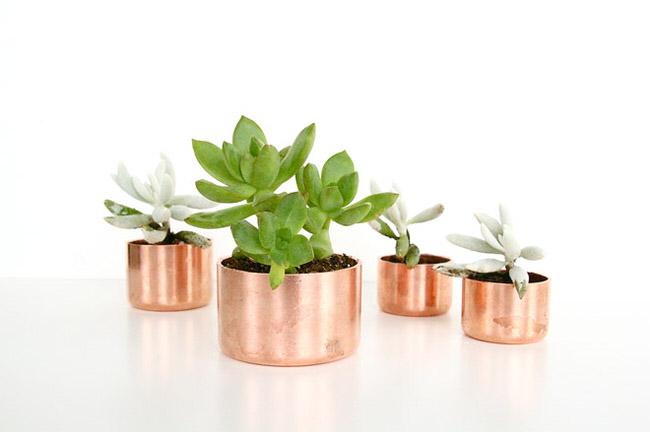
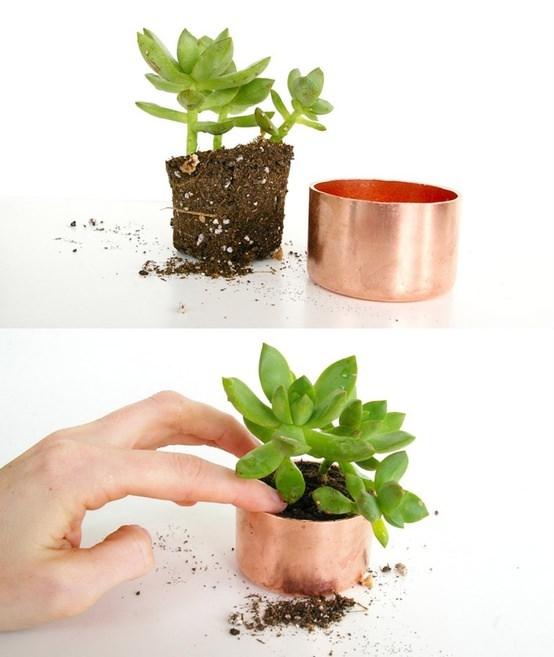
From the book, Trellises, Planters & Raised Beds from Cool Springs Press, this DIY copper coil trellis is easy and really amazing as art in the garden.

Another type of decorative copper trellis project, from Lowes. Complete directions, under $100.
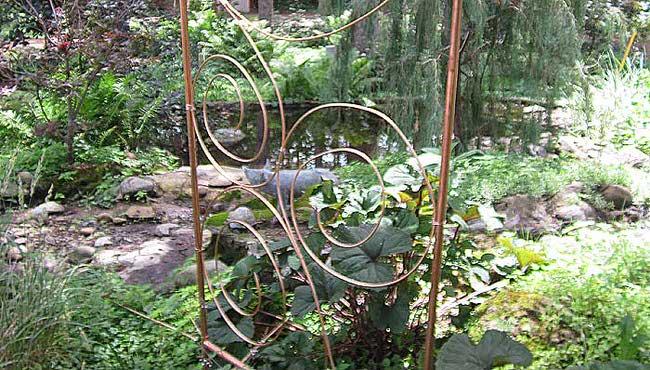
Another great project from Sand and Sisal, this DIY copper mobile is such an awesome idea, and so incredibly easy… make sure you choose the size of copper tubing that bends easily. (But not too easily!)
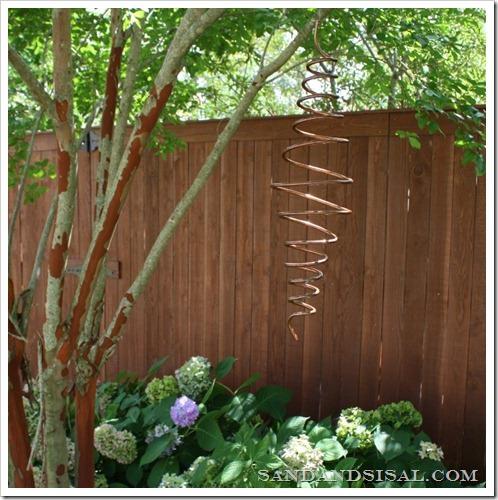
From Family Handyman, make this copper trellis for your garden from copper pipe for all your climbing plants… Can you imagine your roses, or even your cucumbers growing on this?
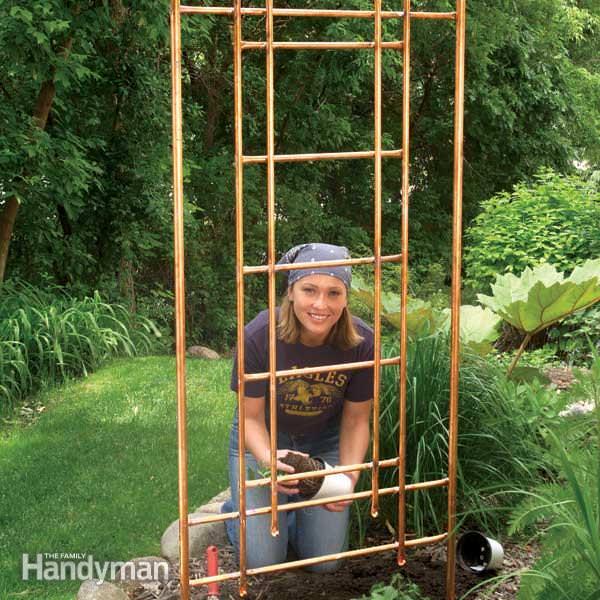
This copper tomato spiral from ‘Suzy Homefaker’ is both functional and decorative. See how she made it.
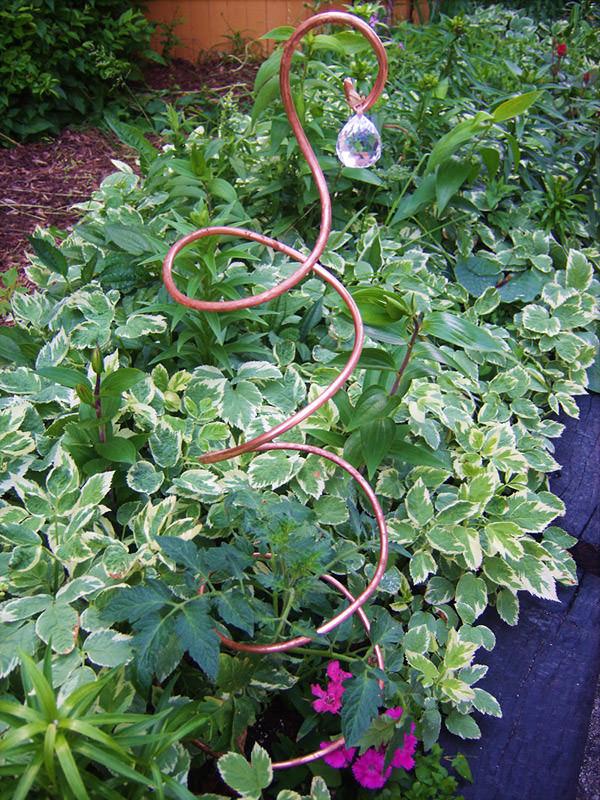
Finally, make copper wind chimes with the complete instructions by Chica and Jo. They use copper pipe, and remember your hardware store may be able to cut it for you!
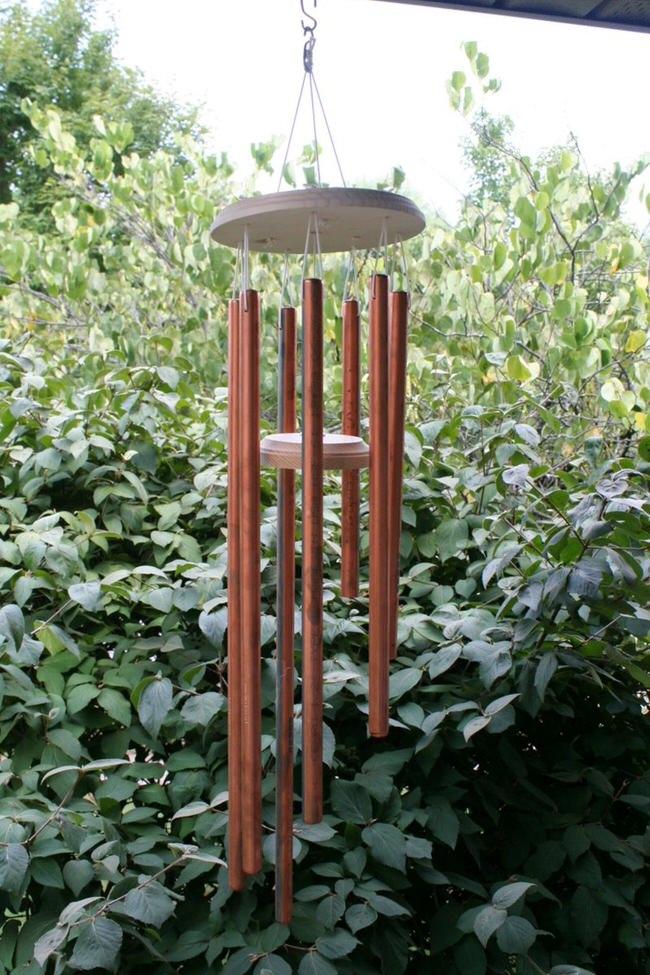
0
0
Beyond:I want to steal your copper model. It's cool.
文章
Abigal
2017年03月13日


I love bringing art into the garden. Even better if it turns out to be a fun project at the same time. These DIY garden mosaic projects are both practical and beautiful, and have complete tutorials. You can either buy tile specifically for mosaic projects, or you can use a wide variety of budget materials. Extra broken tiles, plates, or even glass can create gorgeous works of art for the garden! Follow their instructions in these tutorials and create your own DIY garden mosaic art pieces! Our featured project above is a DIY mosaic stepping stone tutorial by Midwest Living that takes you through step by step. This is a great beginners project.
We are big fans of artist Jeffrey Bale and his pebble mosaic stepping stones. Read his blog to find out how he does it.

Another from Jeffery Bale…

DIY garden mosaic blocks from Craftbits are a little different, but a great project when you need a quick one, especially with kids. I think I would use a calmer color scheme, but I like the simplicity a lot! They use concrete blocks and have all the instructions.
This heart mosaic stepping stone project from Specialty Art Glass is great, and has a full tutorial.

Lauren True for DIY Network created this amazing DIY mosaic ball, and you can find a video tutorial here.

Patterned mosaic pots from Martha are an easy project for both indoors and out. See her instructions.
If you aren’t a big fan of all the colors and patterns in mosaic, try making this mosaic window box planter by Centsational Girl!


I couldn’t leave out this incredible project, mostly because I didn’t believe (at first) that it was a DIY! This DIY mosaic chair is crazy cool, but is an advanced project, so definitely try out some simpler projects and get the hang of the whole medium. But the fact is, this is a tutorial, and you could potentially create this for your garden! BTW, she starts out with an ordinary metal garden chair…Designed by Frances Green,

And finally, we’ll leave you with a few more inspirational photos that we gathered from Pinterest (sorry – couldn’t find the source).



0
0
求助
Michelangelo DaVinci
2017年03月08日

what is the name of this beautiful "palm"" plant?


0
0
meriunkat:kinda looks like Chamaedorea Seifrizii "Bamboo Palm"
Michelangelo DaVinci:@Erin no itss not that
Erin:peperomia prostrata
文章
Andy
2017年02月24日

Learn how to #grow feverfew. Growing feverfew plant is relatively easy. It is a useful medicinal herb, plus it embellishes itself with beautiful yellow-white #flowers .

Difficulty — Easy
Other Names — Featherfew, Fever few, Febrifuge #plant , Featherfoil, Mid-summer daisy and wild chamomile .
Feverfew (Tanacetum parthenium) belong to the Asteraceae family (family of chrysanthemums). This plant is also called “false chamomile”. It is native to the Eastern Mediterranean. From there it was brought to Central and Western Europe a long time ago, where it was grown in gardens as a medicinal and ornamental plant.
In temperate areas, the feverfew is a short living perennial. Where the winters are harder, growing feverfew is possible as an annual plant. It is a low maintenance plant that loves to grow in typically variety of soil types and therefore frequently occurs as a garden weed.
Feverfew Uses
Feverfew is used to treat a wide range of health problems, such as fever, cold, rheumatism and cramps. It is also widely used to treat migraines. The flowers, stems and leaves are harvested for medicinal purposes. Parthenolide, a sesquiterpene lactone is considered the main biological active ingredient found in feverfew.
How to Grow FeverfewPropagation and Planting Feverfew
It can be propagated by seeds, cuttings and division.
To propagate it from seeds, since they are somewhat rare if you don’t find them locally, buy online. Sow them indoors in early spring in a seed tray using well draining starting mix. Scatter the seeds over the surface of soil and lightly tamp them. Cover the tray with plastic sheet or put in a plastic bag and keep that in a bright spot.
If you want to sow seeds directly on the ground wait until the temperature warms up around 60 F (15 C) and last frost date passes away in the spring. Keep the soil evenly moist until the germination. Germination occurs within one or two weeks after seed sowing.
To know more about feverfew propagation, read this article.
Requirements for Growing FeverfewLocation
Often this herb settles down by itself in the garden and is regarded by many gardeners wrongly as a weed. Ideal location to grow feverfew is full to partially sunny spot. Growing feverfew in pots, railing planters and window boxes is possible too, you can easily cultivate it on your balcony garden, just be careful not to keep it on windy spot.
Watering
Feverfew plants prefer soil which never dry out completely. Regular watering is important but overwatering can lead it to death, care in watering is required in cold weather conditions, in winter.
Soil
This undemanding plant grows in all soil types except heavy clay rich soil. Best to plant it in nutrient-rich, well drained and loose soil.
Feverfew Plant CareFertilizer
Growing feverfew doesn’t require fertilizer, if soil is rich in organic matter. However, you can apply a fertilizer you use for other flowers monthly.
Overwinter
Feverfew plants are grown as perennial and annual. Annual varieties die off in the winter and then germinate again in the spring. Feverfews are sensitive to extreme cold and need special care in winter time.
Mulching
Do protect mulching to protect the plant from severe cold in winters. Mulching also helps in summers in conserving moisture.
Pruning
Deadhead the faded flowers and slightly prune off the plant after the first flowering. Pruning stimulates the growth of new flowers. Prune long, leggy and diseased
branches with discolored leaves. You can prune off the plant up to about one-third of its size.
Pests and diseases
While growing feverfew plants, gardeners sometimes face problems due to wrong planting site and permanent waterlogging in soil. In pests and diseases, care feverfew plant from slugs, powdery mildew, spider mites and aphids. To prevent the pests, colonize geraniums, garlics or cress as companion plants.
Harvesting

Difficulty — Easy
Other Names — Featherfew, Fever few, Febrifuge #plant , Featherfoil, Mid-summer daisy and wild chamomile .
Feverfew (Tanacetum parthenium) belong to the Asteraceae family (family of chrysanthemums). This plant is also called “false chamomile”. It is native to the Eastern Mediterranean. From there it was brought to Central and Western Europe a long time ago, where it was grown in gardens as a medicinal and ornamental plant.
In temperate areas, the feverfew is a short living perennial. Where the winters are harder, growing feverfew is possible as an annual plant. It is a low maintenance plant that loves to grow in typically variety of soil types and therefore frequently occurs as a garden weed.
Feverfew Uses
Feverfew is used to treat a wide range of health problems, such as fever, cold, rheumatism and cramps. It is also widely used to treat migraines. The flowers, stems and leaves are harvested for medicinal purposes. Parthenolide, a sesquiterpene lactone is considered the main biological active ingredient found in feverfew.
How to Grow FeverfewPropagation and Planting Feverfew
It can be propagated by seeds, cuttings and division.
To propagate it from seeds, since they are somewhat rare if you don’t find them locally, buy online. Sow them indoors in early spring in a seed tray using well draining starting mix. Scatter the seeds over the surface of soil and lightly tamp them. Cover the tray with plastic sheet or put in a plastic bag and keep that in a bright spot.
If you want to sow seeds directly on the ground wait until the temperature warms up around 60 F (15 C) and last frost date passes away in the spring. Keep the soil evenly moist until the germination. Germination occurs within one or two weeks after seed sowing.
To know more about feverfew propagation, read this article.
Requirements for Growing FeverfewLocation
Often this herb settles down by itself in the garden and is regarded by many gardeners wrongly as a weed. Ideal location to grow feverfew is full to partially sunny spot. Growing feverfew in pots, railing planters and window boxes is possible too, you can easily cultivate it on your balcony garden, just be careful not to keep it on windy spot.
Watering
Feverfew plants prefer soil which never dry out completely. Regular watering is important but overwatering can lead it to death, care in watering is required in cold weather conditions, in winter.
Soil
This undemanding plant grows in all soil types except heavy clay rich soil. Best to plant it in nutrient-rich, well drained and loose soil.
Feverfew Plant CareFertilizer
Growing feverfew doesn’t require fertilizer, if soil is rich in organic matter. However, you can apply a fertilizer you use for other flowers monthly.
Overwinter
Feverfew plants are grown as perennial and annual. Annual varieties die off in the winter and then germinate again in the spring. Feverfews are sensitive to extreme cold and need special care in winter time.
Mulching
Do protect mulching to protect the plant from severe cold in winters. Mulching also helps in summers in conserving moisture.
Pruning
Deadhead the faded flowers and slightly prune off the plant after the first flowering. Pruning stimulates the growth of new flowers. Prune long, leggy and diseased
branches with discolored leaves. You can prune off the plant up to about one-third of its size.
Pests and diseases
While growing feverfew plants, gardeners sometimes face problems due to wrong planting site and permanent waterlogging in soil. In pests and diseases, care feverfew plant from slugs, powdery mildew, spider mites and aphids. To prevent the pests, colonize geraniums, garlics or cress as companion plants.
Harvesting
1
0
求助
Janinaandersson
2017年01月13日

how do i take the best Care of this Beautiful trees?


4
0
Erin:Ginseng Ficus, also called Ficus microcarpa, Ficus retusa, and banyan fig, is not the medicinal ginseng plant, but a type of fig. You will be pleasantly surprised to find that a Ginseng Ficus bonsai tree is not only great looking but extremely easy to care for.
This particular tree does not need much attention. You will only need to water it once or twice a week at most. If you over-water it occasionally, this bonsai will adjust.; if you forget to water it on occasion, it will not get mad at you and shrivel up. You will know if you are not giving it enough water because the dark green leaves will start to turn yellow. The best way to keep your Ginseng Ficus moist and happy is to mist it with a spray bottle every day.
sunnyzou:Place:The houseplant can also go outdoors in the summer, preferably in shade.
Temperature: The plant likes to spend the winter in a cool position, at about 12℃.
Water:Give your Ficus Ginseng a moderate amount of water, more in summer than in winter. Don’t leave any water in the saucer, the plant doesn’t like that.
Spray: If the central heating setting is high, spray the Ficus Ginseng now and again with water.
Food:Give your Ficus Ginseng some plant food regularly.
Prune:If you wish, you can prune the plant to give it some shape.
我是小花:banyan
文章
Erin
2016年12月09日

Calathea Plants, native to tropical South and Central America, Africa, and the West Indies, are grown primarily for their beautiful, brightly colored, upright, oval leaves. There are over 300 different types of Calathea Plants, many being man-made hybrids created by tissue cultures. The various Calathea varieties have leaves with a purple undersides and various vibrant colorful patterns on the top side. Indoors, a Calathea is a table plant or short bush that rarely gets bigger than 24” tall and 24”-26” wide. A Calathea Plant, with its exotic foliage, is difficult to care for, but like many other fussy plants, well worth the effort.<img src="1000055465_24273_1481263898.jpg">LIGHT
A Calathea Plant likes bright indirect light; so placing it in front of an east, west, or north window is ideal. Too much direct sun burns the leaves of a Calathea Plant and causes the beautiful leaf colors to fade.
WATER
Calathea Plants are very sensitive to the water you use. Hard water, soft water, fluoridated water, or water of poor quality causes the leaves of a Calathea Plant to turn brown from leaf burn. The best way to water a Calathea Plant is to use distilled water, rain water, or allow your tap water to sit out over night before using it. Keep the soil of a Calathea Plant moist but never soggy. Allow the top 2-3” to dry out before watering. Never let a Calathea Plant sit in water.
FERTILIZER
Feed a Calathea Plant monthly in the spring, summer, and fall with a basic houseplant food at ½ the recommended strength. Don't fertilize a Calathea Plant if it is not growing.
TEMPERATURE
Calathea Plants like temperatures between 65-80 degrees, and do not like cold drafts or temperatures below 55-60 degrees. Hot temperatures cause the leaves of a Calathea Plant to curl.
HUMIDITY
High humidity is a must for a Calathea Plant. A Calathea Plant gets brown leaf edges when the air is too dry. Humidity can be increased by placing your Calathea Plant on a tray of wet pebbles (be sure the pot is on the pebbles and not in the water), setting a humidifier close by, or by grouping plants together to create a greenhouse effect.FLOWERINGThe leaves of a Calathea Plant are more beautiful than many of the flowers on other indoor plants. With over 300 types of Calathea Plants, some varieties, such as Calathea Crocata, White Ice, and Brazilian have lovely flowers as well as spectacular leaves.<img src="1000055466_24273_1481263898.jpg">PESTS
spider mites, scale, Mealy Bugs and Aphids are houseplant pests that can be a problem for Calathea Plants.
DISEASES
The high humidity that a Calathea Plant needs, encourages bacterial and fungal diseases which usually manifest themselves as leaf lesions.SOILUse a good light porous indoor potting soil that retains water but still drains quickly for Calathea Plants. African Violet soil works well for Calatheas.
POT SIZE
A Calathea Plant rarely need repotting.
PRUNING
Cut off brown or crispy Calathea leaves as soon as they appear.
PROPAGATION
Calatheas Plants are propagated by plant division but it is a little difficult.
POISONOUS PLANT INFO
Calatheas are non- Poisonous Houseplants.<img src="1000055467_24273_1481263899.jpg">
A Calathea Plant likes bright indirect light; so placing it in front of an east, west, or north window is ideal. Too much direct sun burns the leaves of a Calathea Plant and causes the beautiful leaf colors to fade.
WATER
Calathea Plants are very sensitive to the water you use. Hard water, soft water, fluoridated water, or water of poor quality causes the leaves of a Calathea Plant to turn brown from leaf burn. The best way to water a Calathea Plant is to use distilled water, rain water, or allow your tap water to sit out over night before using it. Keep the soil of a Calathea Plant moist but never soggy. Allow the top 2-3” to dry out before watering. Never let a Calathea Plant sit in water.
FERTILIZER
Feed a Calathea Plant monthly in the spring, summer, and fall with a basic houseplant food at ½ the recommended strength. Don't fertilize a Calathea Plant if it is not growing.
TEMPERATURE
Calathea Plants like temperatures between 65-80 degrees, and do not like cold drafts or temperatures below 55-60 degrees. Hot temperatures cause the leaves of a Calathea Plant to curl.
HUMIDITY
High humidity is a must for a Calathea Plant. A Calathea Plant gets brown leaf edges when the air is too dry. Humidity can be increased by placing your Calathea Plant on a tray of wet pebbles (be sure the pot is on the pebbles and not in the water), setting a humidifier close by, or by grouping plants together to create a greenhouse effect.FLOWERINGThe leaves of a Calathea Plant are more beautiful than many of the flowers on other indoor plants. With over 300 types of Calathea Plants, some varieties, such as Calathea Crocata, White Ice, and Brazilian have lovely flowers as well as spectacular leaves.<img src="1000055466_24273_1481263898.jpg">PESTS
spider mites, scale, Mealy Bugs and Aphids are houseplant pests that can be a problem for Calathea Plants.
DISEASES
The high humidity that a Calathea Plant needs, encourages bacterial and fungal diseases which usually manifest themselves as leaf lesions.SOILUse a good light porous indoor potting soil that retains water but still drains quickly for Calathea Plants. African Violet soil works well for Calatheas.
POT SIZE
A Calathea Plant rarely need repotting.
PRUNING
Cut off brown or crispy Calathea leaves as soon as they appear.
PROPAGATION
Calatheas Plants are propagated by plant division but it is a little difficult.
POISONOUS PLANT INFO
Calatheas are non- Poisonous Houseplants.<img src="1000055467_24273_1481263899.jpg">
3
3
Aikesi
2016年11月26日

Wow!!!!So beautiful!!!
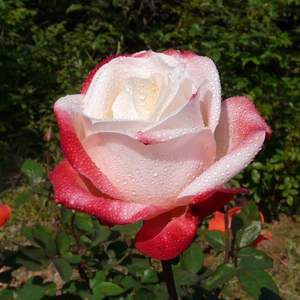

4
0
fantasy:It's beautiful!
sunnyzou:love it sooooooo much





